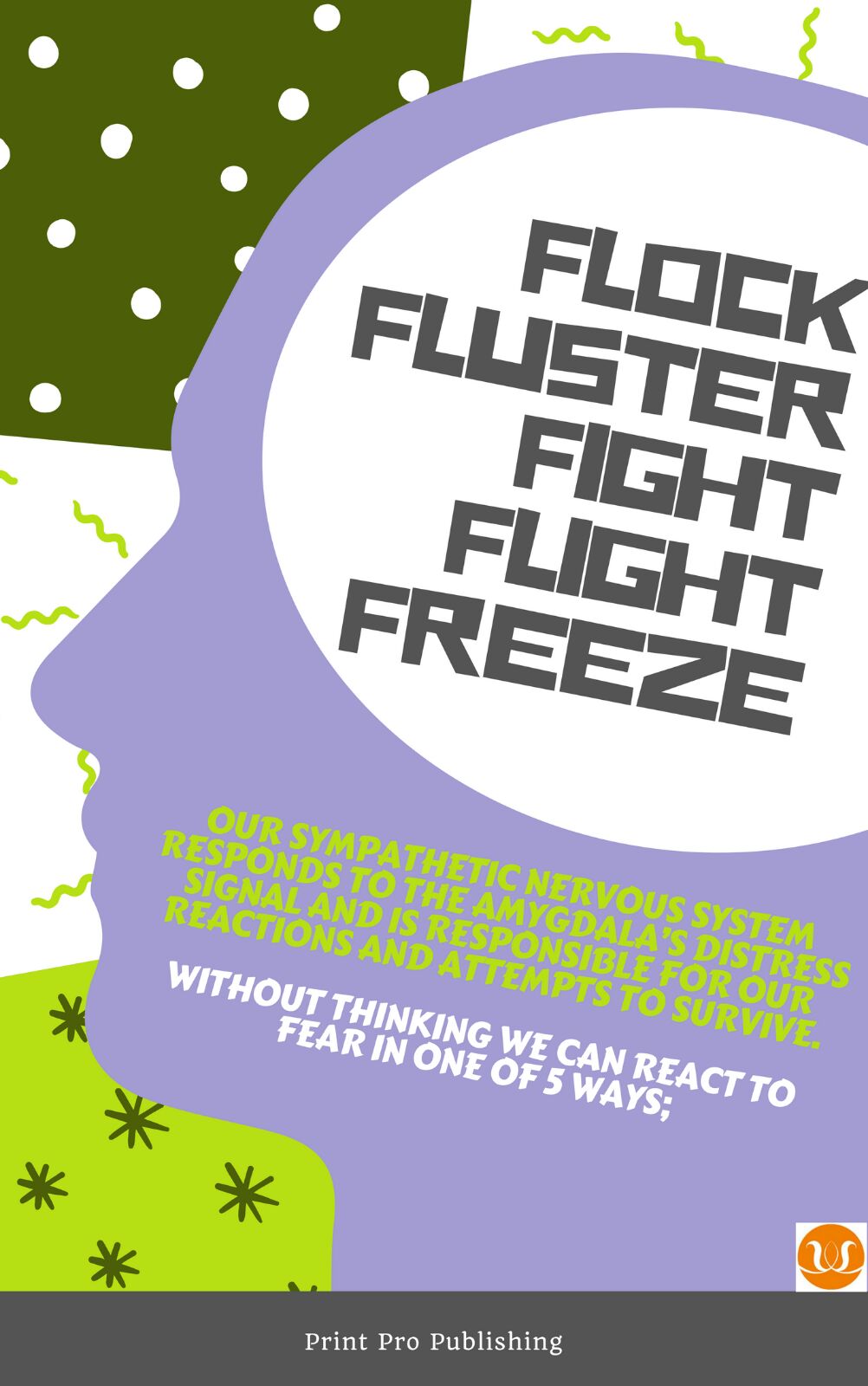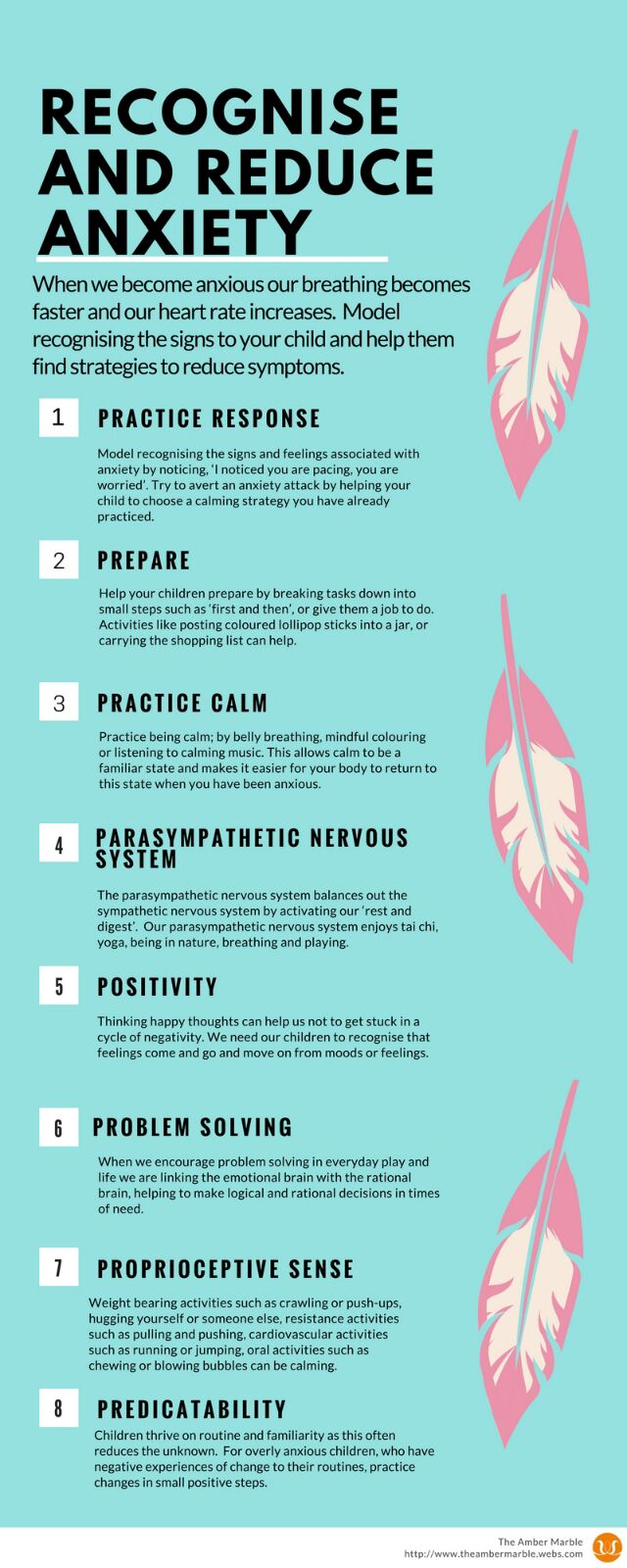Why Anxiety Occurs – Anxiety occurs when demands that are placed on us by our environment are out of balance with our ability to cope with them.
Impact of Anxiety – When we become anxious, our breathing becomes faster and shallow, our pulse rate rises and we can become clammy and agitated. If we are preoccupied with the demand or threat that causes our anxiety, we can lose the ability to think logically, act rationally and learn successfully. If anxiety goes unsupported, our physical health can also be affected.
Anxiety Statistics – Anxiety in children and young people has increased by 73% in the last decade. We could speculate all day about why this might be, the important thing is that we recognise this increase and begin to support those children at home, in school, and socially.
Recognise and Reduce – Most children will experience feelings of fear at some point, but for overly anxious children, it can really take over. It is important that we teach our children to begin to recognise the signs they are becoming anxious, in order to be able to reduce the symptoms of anxiety. Modelling the recognition of anxiety can help your child. For example: ‘I notice you are pacing, you are worried’. Try to avert an anxiety attack by helping your child decide on another course of action or by helping them to choose a strategy you have already practiced.
THE SCIENCE OF ANXIETY
Neuroscience Behind Anxiety – The reptilian brain (brainstem) is responsible for basic functions such as breathing and survival instincts. The emotional brain (The Limbic System) is the feelings and memories part of the brain. The thinking brain (The Neo Cortex) is where we make rational decisions. The amygdala is part of our emotional brain and is like our super hero, instinctively responding to threats, danger or stress. As the world is now free from saber tooth tigers, and other such dangers, our superhero often gets bored and mistakes nerves (such as when public speaking or seeing something on social media) for dangerous threats.
Sympathetic Nervous System – Our sympathetic nervous system responds to the amygdala’s distress signal and is responsible for our reactions to survive. Without thinking we can react to fear in one of 5 ways – The 5 F’s:
Flock
: go to trusted people to feel safe
Fluster
: make silly mistakes and panic as we can’t think straight
Fight
: become agitated, angry and aggressive
Flight
: run away at speed
Freeze
: we are unable to move or speak, frozen in fear
Parasympathetic system – The parasympathetic nervous system balances out the sympathetic nervous system by activating our ‘rest and digest’. These signals are sent through the vagus nerve to the base of the spine. Our parasympathetic nervous system enjoys activities such as: tai chi, yoga, being in nature, breathing exercises, and playing.
SKILLS AND STRATEGIES
Practice Calm and Practice Response – It is helpful to practice the desired response to anxiety, like practicing emergency stops when we learn to drive. This allows our brains to know just what we want them to do. Practicing being calm, by belly breathing, mindful colouring or listening to calming music, allows the state of calm to be a familiar state and makes it easier for your body to return to this state when you have been anxious.
Proprioceptive Sense – We often find ourselves calming down by sending signals to our proprioceptive sense. The proprioceptive sense is responsible for letting our bodies know where they are in space. Lots of people naturally use proprioceptive seeking activities to help them calm their bodies. For example: weight bearing activities such as crawling or push-ups, hugging yourself or someone else, resistance activities such as pulling and pushing, cardiovascular activities such as running or jumping and oral activities such as chewing.
Positivity –Being positive and thinking happy thoughts can help you not to get stuck in a cycle of negativity. We need our children to move on from moods or feelings and recognise that feelings come and go; extended periods of time spent in a bad mood can make this mood all too familiar and common.
Problem Solving – When we encourage problem solving in everyday play and life, we are linking the emotional brain with the rational brain. When this link is weak, we are unable to make logical and rational decisions in times of need as our emotions take over. By supporting problem solving, we are getting the 2 brains to work together and this helps us to make decisions in emotional situations rather than just react in one of the 5 F’s.
Prepared – Being prepared for what’s coming, in a positive way, can help overcome the worries attached to it, especially if there is going to be change to your child’s usual routine – something overly exciting, or something they will worry about. For smaller children, break the steps down into simple ‘first and then’ such as, ‘first hang your coat on the peg, then we will go and find your friends’. Perhaps your child would benefit from a job to do every time they are going into a situation they don’t like? Routine activities like posting coloured lollipop sticks into a jar, or carrying the shopping list could help.
Predictability – Children thrive on routine and familiarity as this often reduces the unknown, which can be scary. It is good to expose your child to changes in routine but these are best done with support from a secure adult. For overly anxious children who have negative experiences of change to routine, practice changes in small positive steps.
Play Therapy can be beneficial for children who struggle with worry and anxiety. Some of the strategies discussed in this article can be used alongside Play and Creative Arts Therapy.
WRITTEN BY REBECCA COATES
PLAY THERAPIST, BABY BONDING & PARENT-CHILD ATTACHMENT PLAY PRACTITIONER
Please click on the images below to save them for your own use.


